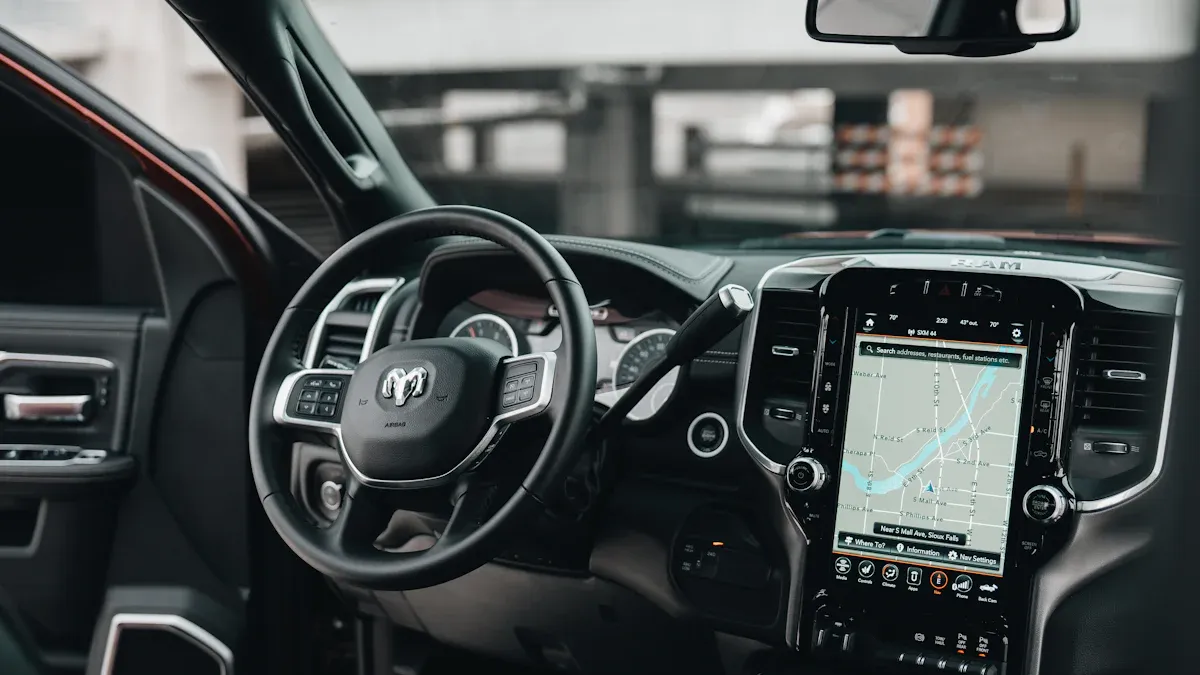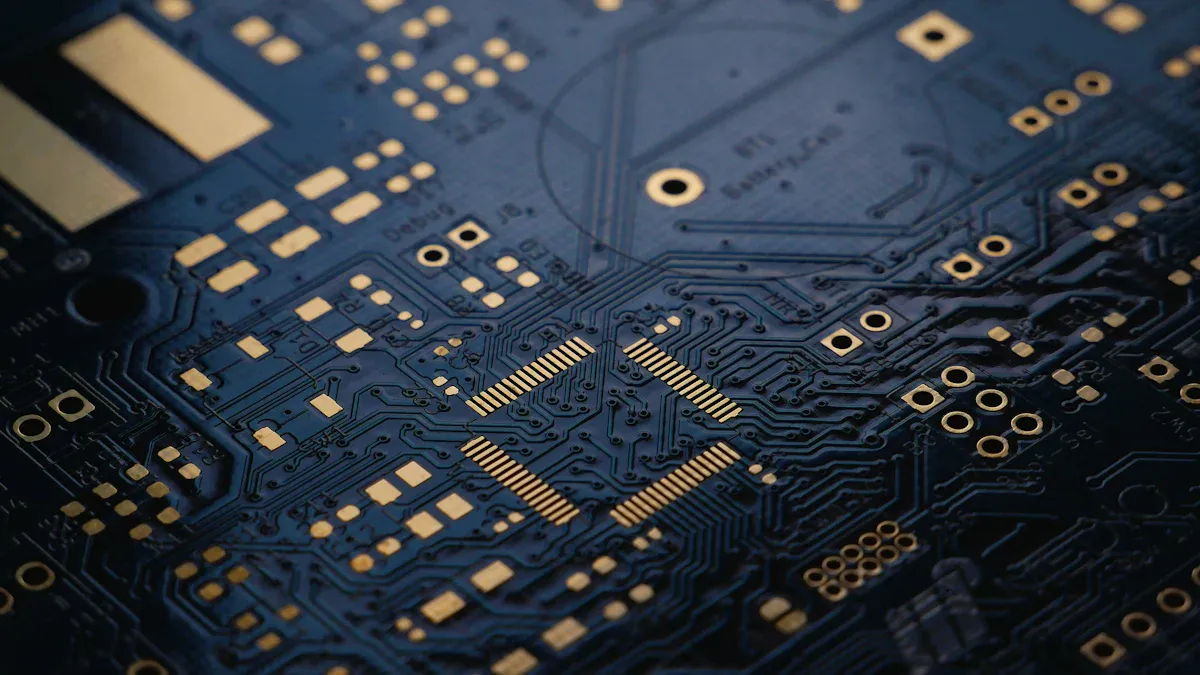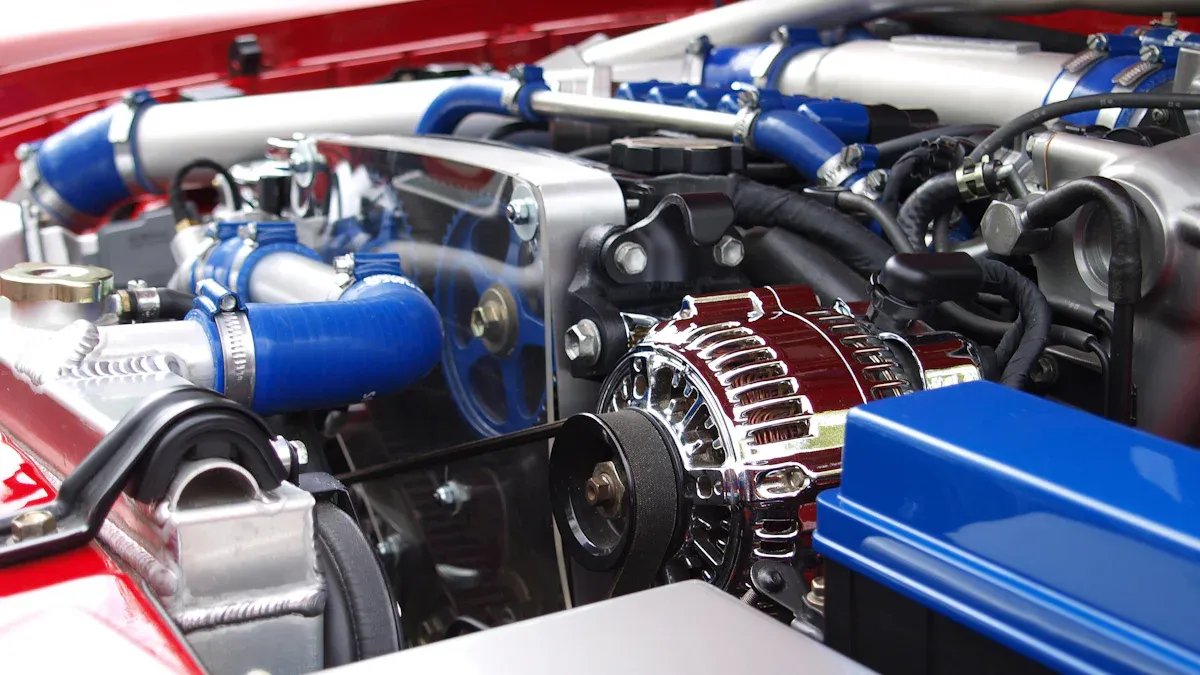Unlocking DAC081C085CIMM/NOP Potential for Smarter Vehicles

Modern cars need to be precise and efficient. The DAC081C085CIMM/NOP helps meet these needs. This 8-bit converter changes digital signals into accurate analog signals. It helps make vehicles smarter and work better. It improves engine controls, battery systems, and sensor setups. It uses little power and works with I²C interfaces. This makes it reliable for small designs. By controlling voltage well, the DAC081C085CIMM/NOP helps create better car technology.
Key Takeaways
The DAC081C085CIMM/NOP is an 8-bit chip. It changes digital signals into accurate analog outputs, helping cars work better.
It uses little power and is very small. This makes it great for modern cars, helping engines and saving battery power.
The I²C interface makes it easy to connect with microcontrollers. This simplifies how it works in car systems.
Engineers must check if it works with the right voltage and temperature. This ensures it works well in cars.
Setting it up and adjusting it correctly is important. This helps get accurate sensor data and steady voltage control.
Understanding the DAC081C085CIMM/NOP

Key Features and Specifications
The DAC081C085CIMM/NOP is an 8-bit converter. It changes digital signals into accurate analog outputs. This makes it great for controlling voltage in systems. Its I²C interface helps it connect easily to processors. This feature makes it simple to use in many devices.
It works with a supply voltage between 2.7V and 5.5V. This range lets it fit different system needs. It uses very little power, which is good for battery devices. Its small MSOP-8 package saves space in tight designs.
Its 8-bit resolution gives precise voltage control. The I²C interface works well with modern car systems. Low power use helps make portable and energy-saving designs possible.
Automotive Applications of the DAC081C085CIMM/NOP
The DAC081C085CIMM/NOP helps improve car technology. It supports engine control units by giving accurate analog signals. This helps engines work better and more efficiently.
In battery systems, it controls voltage for better energy use. It also improves sensor signal processing by converting digital data. This helps sensors like temperature and pressure work more accurately. Its small size and low power use make it great for car electronics.
Using the DAC081C085CIMM/NOP helps make smarter car systems. It improves engines, batteries, and sensor accuracy for better vehicles.
Preparing for Integration
Ensuring Compatibility with Automotive Systems
Adding the DAC081C085CIMM/NOP to cars needs careful planning. Engineers must check if the DAC's voltage range matches the car's system. The DAC081C085CIMM/NOP works between 2.7V and 5.5V. This range fits most modern car designs. Its I²C interface makes it easy to connect with microcontrollers. These are often used in engine controls and battery systems.
Temperature is also very important. Cars face extreme heat and cold. The DAC081C085CIMM/NOP works well from 0°C to 75°C. This ensures it performs reliably in tough conditions. Its small MSOP-8 package fits into tight spaces. This is useful for sensors and control units.
Tip: Check if the DAC's resolution and speed fit your car's needs. This helps with tasks like sensor setup and voltage control.
Tools and Components for Integration
To use the DAC081C085CIMM/NOP, you need the right tools. Engineers use guides and supplier info to find matching parts. Below is a table comparing two common DACs for cars:
Feature | DAC0808LCN/NOPB | DAC081C085CIMM/NOP |
|---|---|---|
Type | 8-bit Digital-to-Analog Converter | 8-bit Digital-to-Analog Converter |
Package | 16-pin DIP | 8VSSOP |
Supply Voltage Range | ±4.5V to 18V | ±4.5V to 18V |
Resolution | 8-bit | 8-bit |
Settling Time | 150 nanoseconds | 150 nanoseconds |
Operating Temperature Range | 0°C to 75°C | 0°C to 75°C |
Compliance | Lead-free and RoHS-compliant | Lead-free and RoHS-compliant |
Applications | Signal generation, data acquisition, audio/video equipment | Signal generation, data acquisition, audio/video equipment |
Engineers should also check if parts are available. The DAC081C085CIMM/NOP is easy to find, with over 1,000 units in stock. Its design is great for accurate signal conversion in cars.
Note: Always read the datasheet for detailed specs and usage tips.
Step-by-Step Integration Process
Hardware Setup for the DAC081C085CIMM/NOP
Setting up the DAC081C085CIMM/NOP needs careful steps. First, connect it to the power supply. It works with 2.7V to 5.5V, fitting most car systems. Correct wiring gives stable power and avoids signal problems.
The I²C interface makes it easy to link with microcontrollers. Connect the SDA (data) and SCL (clock) pins to the microcontroller. Add pull-up resistors to keep signals steady. Its small MSOP-8 size fits tight spaces, perfect for compact car designs.
Tip: Start with a breadboard or PCB for safe testing and changes.
Software Configuration and Calibration
Software setup makes the DAC081C085CIMM/NOP work in the system. Write code to start the I²C interface and set the DAC's address. This address lets the microcontroller talk to the DAC.
Calibration ensures the DAC gives correct analog signals. Send test signals and check the output voltage. Adjust it to match the expected values. This improves sensor accuracy and voltage control in cars.
Note: Use debugging tools to check if the microcontroller talks to the DAC.
Testing and Validation Procedures
Testing checks if the DAC081C085CIMM/NOP works right. Engineers test it in different temperatures and voltages. They watch the outputs to ensure they are correct.
Validation means adding the DAC to the car system and testing it with other parts. Engineers check if it works well with digital inputs. Good validation ensures the DAC helps make smarter car systems.
Alert: Keep test records to find improvements and meet car standards.
Optimization Tips for the DAC081C085CIMM/NOP

Enhancing Performance in Automotive Systems
To make the DAC081C085CIMM/NOP work better, focus on key factors. Stable power is very important for good performance. Place quality capacitors near the DAC to reduce noise. This helps keep the analog output steady. A steady output is needed for engine controls and sensor setups.
Set up the I²C interface correctly for better results. Use the right clock speed to avoid errors. Match the I²C speed to the system for smooth data flow.
Tip: Use shielded wires for I²C to block interference in cars.
Temperature control is also important for the DAC's performance. Keep the DAC away from hot parts to avoid overheating. Add heat sinks or insulation to protect it in extreme heat or cold.
Troubleshooting Integration Challenges
Problems may happen when adding the DAC081C085CIMM/NOP to systems. Wrong output voltages or connection issues are common. First, check all wiring connections carefully. Make sure the SDA and SCL pins are connected properly. This fixes many I²C problems.
Debugging software is also very important. Check if the DAC's address matches the microcontroller's settings. Use tools like logic analyzers to find communication issues.
Alert: If the DAC gives wrong voltages, check calibration and input data.
Power problems can also cause issues. Make sure the voltage stays between 2.7V and 5.5V. Add capacitors near the power pins to reduce noise and keep voltage stable.
By solving these problems step by step, the DAC081C085CIMM/NOP can work well in car systems.
Adding the DAC081C085CIMM/NOP to cars has many benefits. It is precise, uses little power, and is small in size. These qualities improve engines, batteries, and sensor performance. This helps make cars smarter and more efficient. By using the shared tips, engineers can make it work better. They can also fix any problems easily. The DAC081C085CIMM/NOP is a big step for car technology. It helps create new and dependable vehicle solutions.
Why is the DAC081C085CIMM/NOP good for car systems?
The DAC081C085CIMM/NOP is precise and uses little power. It works with I²C, making it reliable for cars. Its small MSOP-8 size fits in tight spaces.
How does the DAC081C085CIMM/NOP help sensors work better?
It changes digital signals into accurate analog outputs. This helps sensors like temperature and pressure give better readings. Stable voltage control keeps sensors working well.
Can the DAC081C085CIMM/NOP handle tough car conditions?
Yes, it works between 0°C and 75°C. This range fits most car environments. Its strong design keeps it working in different conditions.
What do you need to set up the DAC081C085CIMM/NOP?
You need a microcontroller with I²C, pull-up resistors, and steady power. Debugging tools like logic analyzers help check connections and settings.
Why is the I²C interface useful for cars?
The I²C interface makes it easy to connect to microcontrollers. It transfers data quickly and reduces wiring. This is great for small and simple car designs.
See Also
Enhancing Process Control With AD74413RBCPZ Insights
Unveiling Essential Automotive Features of FREESCALE MCF5251CVM140
Enhancing Automotive Performance Using NXP Microcontrollers MC9S12 Series
Investigating MC9S12DJ256MFUE Specs for Automotive Use Cases
Three Key Transformations of Industrial Automation by ATIC83E2
CALL US DIRECTLY
(+86)755-82724686
RM2508,BlockA,JiaheHuaqiangBuilding,ShenNanMiddleRd,Futian District,Shenzhen,518031,CN
www.keepboomingtech.com sales@keepboomingtech.com
